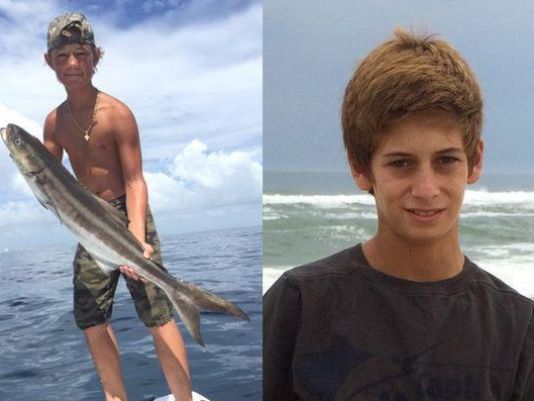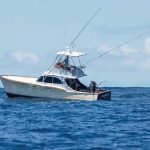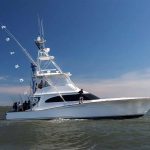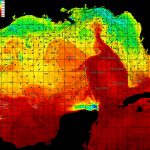Article Courtesy: floridatoday.com | By: George A. Maul | Originally published: May 9, 2016 | Please click here for original article.
[responsive] [/responsive]
[/responsive]
Above: Austin Stephanos, left, and Perry Cohen went missing on a fishing trip July 24. (Photo: Courtesy photo).
On July 24, 2015 Perry Cohen and Austin Stephanos, both 14 years old, went fishing. They took their small craft out Jupiter Inlet and were never found again.
Two days later, Bobby Smith reported flying over the area where Perry and Austin were missing, reported seeing what might have been their boat, and possibly one or both of them clinging to the wreckage.
According to Chris Bonanno of FLORIDA TODAY, Smith radioed in the latitude and longitude of the sighting, but the teens were not seen by Coast Guard search and rescue missions.
Their boat was found in the Sargasso Sea by the Norwegian vessel Edda Fjord on March 18, 2016. No surprise to physical oceanographers that boats entrained into the Florida Current are advected into the North Atlantic gyre circulating around Bermuda.
Could the loss of Austin and Perry have been prevented by existing technology, called High Frequency Radar (HFR)?
In the 1940s, Australian scientists noticed that HFR radio waves were backscattered from the sea surface. They reasoned that the radio waves were returned by a mechanism called Bragg scattering with a slight change in frequency known as the Doppler shift. This is the same mechanism that allows meteorologists to estimate winds, except that the echoed “Doppler radar” are from the sea surface rather than pockets of air.
Experiments off Cape Canaveral in the 1950s confirmed that Doppler–shifted radio waves were from ocean surface waves, and that the Doppler shift was caused by surface currents in the sea. The game was on: engineering the Bragg-backscattered Doppler-shifted radio waves into a system that could calculate, map, and report surface current speed and direction, within minutes of the HFR transmission.
Austin and Perry might have been near the western edge of the Florida Current, where oceanic fronts, currents, and counter-currents are well-known. If Bobby Smith’s sighting were within the mapped HFR area, the speed and direction of the water could have, with existing HFR technology, been known.
That would have given the Coast Guard definitive information for search and rescue, funded by the National Oceanic and Atmospheric Administration’s Integrated Ocean Observing System – but not in east Florida.
Perhaps asking our congressional delegation as to why NOAA / IOOS doesn’t fund HFR in east Florida, but does so in other coastal states, might have saved Perry and Austin’s life?
HFR is proven, off-the-shelf technology. Two antennas placed north and south of Jupiter Inlet, costing about $150,000, would have mapped the sea surface currents and waves where Bobby may have seen Austin and Perry. A bit of computer programing and HFR observations, would have predicted where they might have been in the hours and days that followed.
For a few million dollars, the entire east coast of Florida could have HFR coverage. Freely available to our brave Coast Guard SAR teams, recreational and commercial fisherman, yachts and cruise ship operators, harbormasters, and other maritime interests. Current speed and direction, and wave spectrum data, in real-time, and at every mile in horizontal resolution out to 100 nautical miles, freely available to the public.
Wow!
Maybe Austin and Perry would have been found and their lives given us unimaginable contributions to human knowledge.
High Frequency Radar is operational in many places, but not on the east coast of Florida. Maps of the current speed and wave height and direction, are freely available through projects funded by NOAA / IOOS on other coasts. Why hot here?
Perry and Austin, and in the future other “teens”, might still live but for the implementation of existing HFR technology.
Maul is professor of oceanography at Florida Institute of Technology, and the 2016 Medalist of the Florida Academy of Sciences





